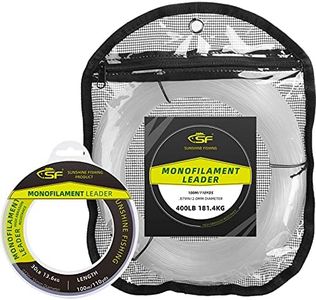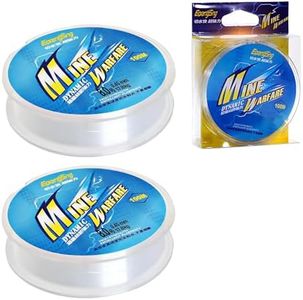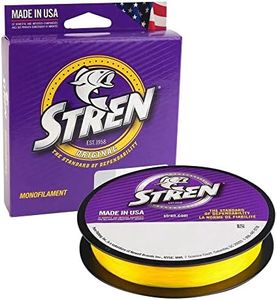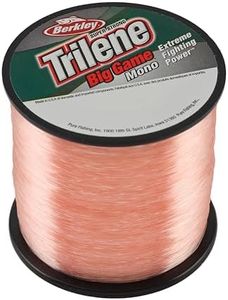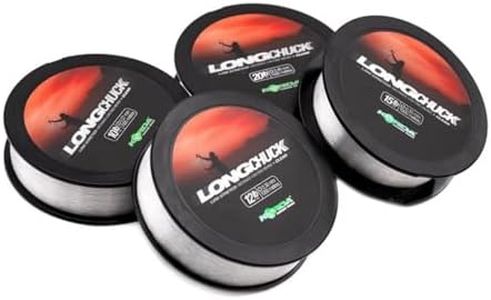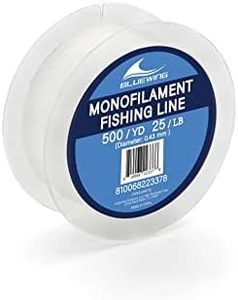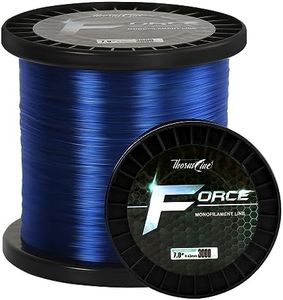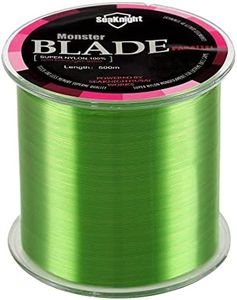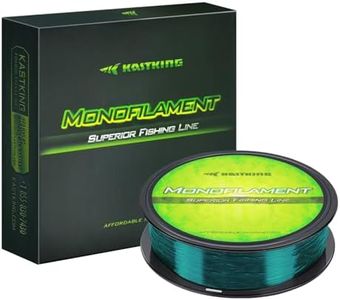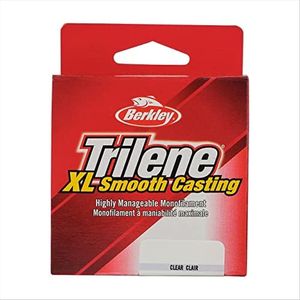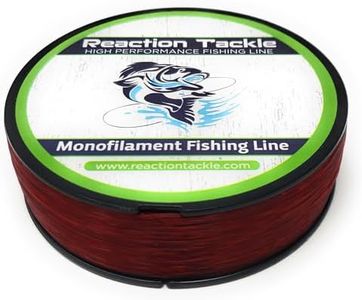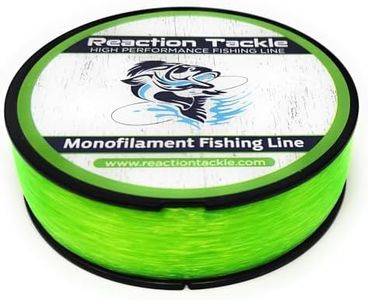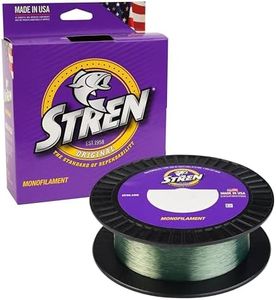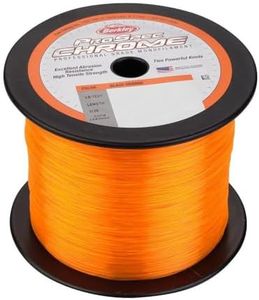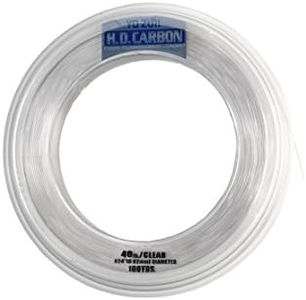We Use CookiesWe use cookies to enhance the security, performance,
functionality and for analytical and promotional activities. By continuing to browse this site you
are agreeing to our privacy policy
10 Best Monofilament Fishing Lines
From leading brands and best sellers available on the web.Buying Guide for the Best Monofilament Fishing Lines
Choosing the right monofilament fishing line is all about matching your style of fishing, the type of fish you are targeting, and the conditions where you’ll be fishing. Monofilament is popular because it’s versatile, generally easier to handle than braided or fluorocarbon lines, and it can be used in a variety of situations. The best approach is to consider your fishing needs first—like the size and species of fish, water clarity, and casting style—then select the key features of the line that best match those needs. Always remember, there isn't a one-size-fits-all; the right line for freshwater trout might not be right for saltwater bass.Pound Test (Strength)Pound test refers to the amount of weight a fishing line can handle before breaking. This is a crucial indicator of its strength and is usually labeled in pounds (e.g., 6 lb, 10 lb, 20 lb). Lighter lines (2–8 lb) are best for smaller fish, finesse fishing, or clear water where stealth is important. Medium pound tests (10–15 lb) are good for most average freshwater fish, while heavier lines (20 lb and above) are suited for big, strong fish or heavy cover like weeds. To pick the right pound test, think about the fish you target most and the environment you fish in—bigger, stronger fish and snag-prone spots need stronger lines.
Line DiameterLine diameter is the thickness of the monofilament line and is typically measured in millimeters or inches. Thinner lines are less visible to fish and allow for longer casts, while thicker lines provide extra strength and abrasion resistance. If you need long, smooth casts or are fishing in clear water, go for thinner lines. For areas with lots of rocks, logs, or aggressive fish, a thicker line provides more durability. Think about whether you need invisibility and casting distance or toughness and abrasion resistance to choose the best diameter.
StretchMonofilament lines naturally stretch more than other types, which can be both a benefit and a drawback. Stretch helps absorb strong pulls from fish, making it less likely your line will snap, but too much can reduce sensitivity and make hooksets less effective at long ranges. High-stretch lines are forgiving and great for beginners or when fighting fast fish, while low-stretch lines give you more sensitivity to detect bites and set the hook quickly. Reflect on whether you want forgiveness or feedback from your line to guide your choice.
Visibility/ColorMonofilament is available in a range of colors and levels of visibility, from clear to hi-vis yellow or green. Clear or low-visibility colors are best for clear water and wary fish, while high-visibility options help you see the line above water, which is handy for monitoring bites or using multiple rods. If you often fish in murky water or need to track your line’s movement, a brighter color could be helpful. Match the line color to your fishing environment and decide how visible you need your line to be, both to fish and to yourself.
Abrasion ResistanceAbrasion resistance refers to how well the line stands up to rough surfaces like rocks, sticks, or fish teeth. Monofilament generally offers decent abrasion resistance, but some lines are specially designed for tough conditions. If you fish in spots with lots of structure or target species with rough mouths, choosing a line with higher abrasion resistance will help avoid unexpected break-offs. If you mostly fish open water without many obstacles, standard abrasion resistance should suffice.
ManageabilityManageability describes how easy it is to handle, cast, and tie knots with the line. Softer, more supple monofilament is easier to manage—less likely to tangle, twist, or form bird’s nests—making it great for beginners or those who fish with spinning reels. Some stiffer lines have lower stretch and improved sensitivity but may be harder to handle. If you’re new to fishing or value easy casting and fewer tangles, prioritize a line known for high manageability.
